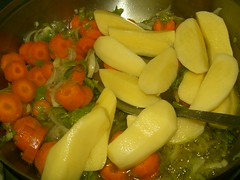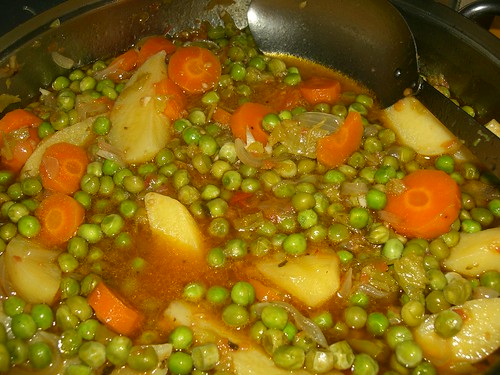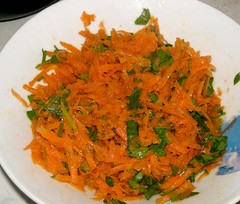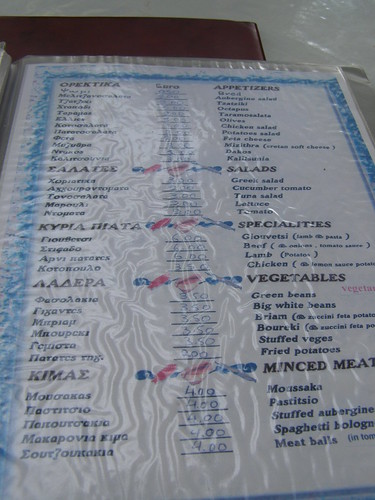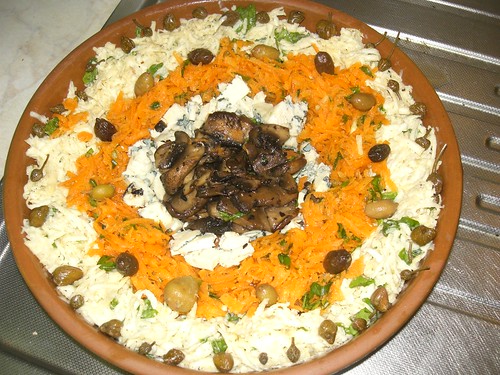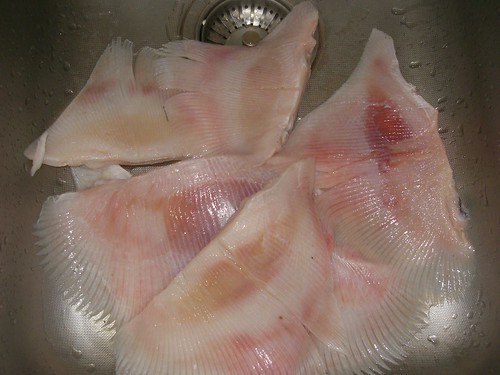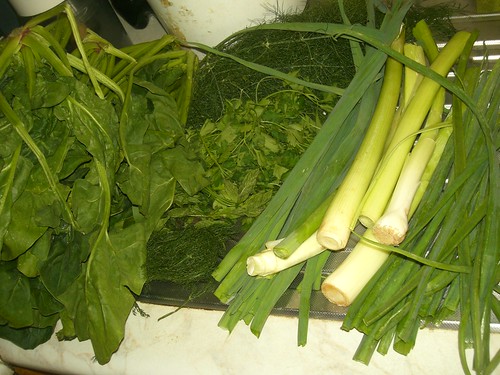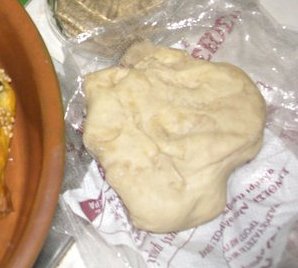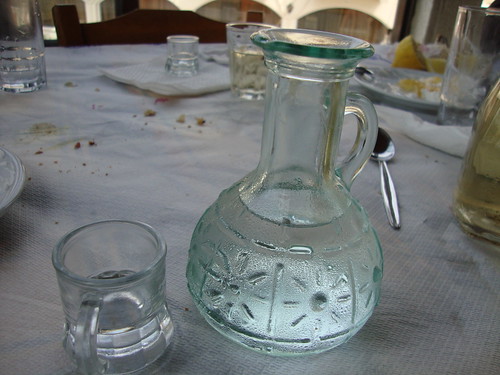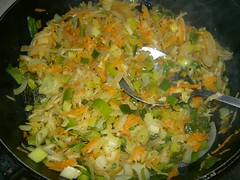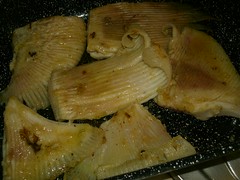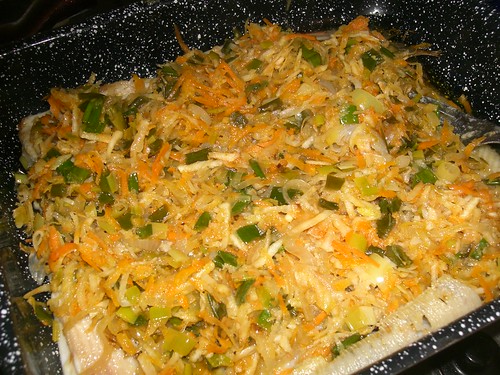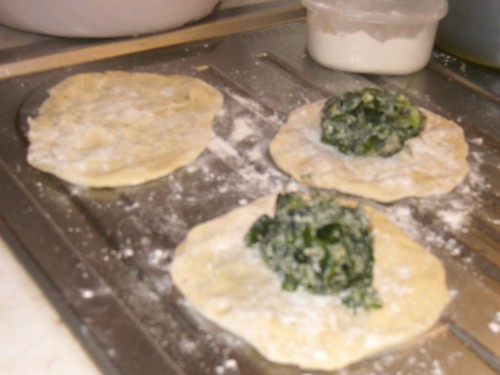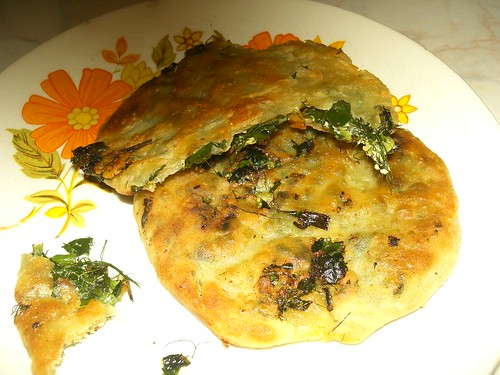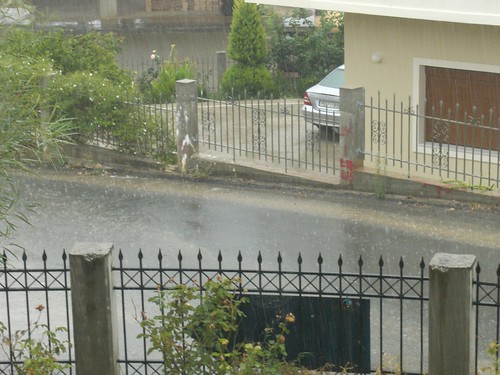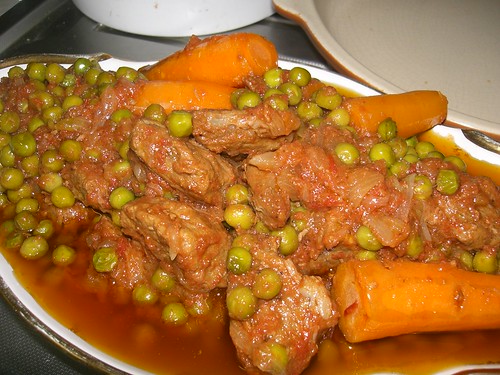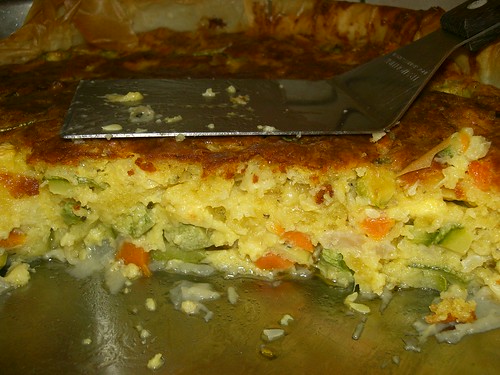Greek doctors killing patients, patients dying while waiting to be attended, maggots in patients' wounds, doctors and nurses having sex in the ear, throat and nose ward, and what else? Oh yes, Greek doctors saving the lives of people who wanted to die instead. That's what most people have heard about Greek hospitals.
My mother-in-law had recently hurt her leg and couldn't walk on it. It was late at night and she couldn't be convinced to go to the hospital for an X-ray, even though it was obvious that she was in great pain. Old people generally don't like being told what to do and she was adamant that she would be fine by the next day. But she wasn't. She HAD to go to hospital, she HAD to have an X-ray, and she HAD to have special pain killers; she realised this herself eventually.
Yiayia loves gardening. We believe it is probably this that keeps her in good health in her old age.
Yiayia was born one year after the last
Ottoman Muslim Cretan left the island. She has lived a very
different kind of life from the one most of us know. At her age, she just wants a bit of peace and quiet before the end comes. She keeps telling us that it isn't very far now. She is constantly reminded of this herself when she falls down, or develops a cold, or feels an ache or pain somewhere in her body. On her most recent fall, she probably wondered: "Is this it?"
She probably didn't want to go to hospital because she had seen the insides of a hospital too much in her life; they aren't the most enticing places anywhere. In Hania, the hospital is relatively new, so at least it has an air of modernity to it, and the signs and walls aren't defaced. But in any hospital the world over, there's the usual rigmarole of the hospital experience that everyone wishes they could avoid: the waiting time in the A&E room.
Past experiences make me think that maybe yiayia had a point. If you have to go to the A&E on a Friday or Saturday night, you are likely to have to put up with the drunks and party revellers who might have got into a punch-up and need stitches. So the A&E beds will be filled with such cases while you, the genuine patient, the one who got sick at the wrong time, will have to wait in the corridors with the pretty girls in their high heeled clonkers and revealing dresses, as they wait for their current boyfriends to come out of surgery. They bring their own entertainment with them in the form of loud ringtones for their cellphones, so this will be your chance to catch up with all the latest pop songs.

Many old people living in remote villages have to battle loneliness on a daily basis. This woman has no family to care for her, but still prefers to live alone, in the company of one other neighbour just like her. She recently burnt her face when her hair caught fire while trying to light an old-fashioned wood-fired oven in the winter.
During the same time period, there are the road accident victims, often young people, led to the A&E via speeding or drunk drivers, or bad driving habits. They are rushed into the hospital through the A&E, their arrival announced by the urgent tone of the ambulance sirens and the screeching tyres. The A&E doctors have no choice, but to stop what they're doing, and rush off to help their colleagues in whatever way they are asked to. Your own 'emergency' loses its importance when a case like this comes up.
Another bad time to go to the A&E is in the afternoon on weekdays, or during the weekend, when people have just finished their day's/week's work, and they decide that they don't have time to visit the doctor (and pay the standard 40-50 euro fee for a consultation), so they just crowd into the A&E. Over-worked interns (who are often not being paid the overtime that they do) work their way through patients suffering from common colds, grating coughs, itchy rashes and other completely non-A&E conditions that take up doctors' time in the A&E department and could have been dealt with at a more appropriate time in a more convenient place.
By mid-morning of the day after she had the fall, Yiayia realised that she wasn't going to get any better, so we trundled her into the car and took her to the hospital.
"Mama, put on your seatbelt," I said.
"Is it OK if I don't wear it?" she replied.
"No," I answered.
"Για να μην σκάσουμε €300," replied her son.
"What's that?" she asked, pointing to the upright blue boxes on the side of the road. They were post office mail boxes, where the mailman now delivers people's letters, instead of privately to their homes. This was the first day Yiayia had left the confines of our neighbourhood in more than two years since she broke her (other) leg. On arriving at the entrance to the A&E, we asked a porter for a wheelchair. He promptly came out to meet us with a hospital bed.
"Oh, I can't climb up onto that," complained Yiayia.
"You don't need to," the porter replied. "I'll get on it, no worries." And he set about to help her up in that way that only porters and nurses know about handling people in this situation, so that they cause them the least amount of pain.
"No! No!" cried Yiayia, fearing the pain. Before she could say 'No!' again, she was lying on the bed.
"OK, Yiayia," said the porter, "we're going for a ride." He drove the bed in the direction of the waiting room. "Take a ticket from the cashier," he said to us.
The cheery lady who had seen what was going on (the stretcher bed gives a case a sense of urgency) gave me a ticket with our priority order number written on it. It wasn't really necessary that morning, because, thankfully, it wasn't busy at the A&E that day. There were actually a lot of people waiting outside the doctors' offices, but only half were patients, mainly very old frail people. The others were their carers. It's a general rule of thumb that at least two people will accompany their old relative to the hospital. The male will usually do the driving, while the female will be at the patient's bedside. There was such a case being attended to at that moment by the doctors, and one more similar case (though not on a bed) outside the surgery as we arrived. The room looked busy, but the patients were actually very few.
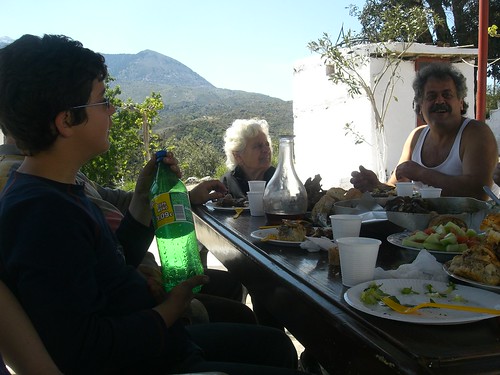
When this yiayia became less mobile, her sons took her into their homes. She now lives with one of them on a monthly rotational basis among her offspring. It's still a rarity (and a luxury) to put old people into retirement homes in Hania. In any case, these people are happiest when in their own home environment or their own family.
The porter was just about to knock on the door to let the doctors know that a special case had arrived. Since my mother-in-law was lying on an A&E stretcher, she had to be dealt with quickly in order to release the bed. At that moment, the door of the surgery opened and a young soft-spoken intern came out.
"What's wrong with Yiayia?" he asked us in the corridor, looking intently at her, but not bothering to take her into the surgery. The bed was bulky, there was another person in a bed too, and it would have simply resulted in a major blockage. In any case, she was surely headed for an X-ray. It is usual for carers in Greece to do more talking than the actual patients. They usually know what's wrong, and they know where it hurts. We explained the circumstances of the fall.
"Where does it hurt, Yiayia?" the doctor asked, this time, addressing the patient. "Does it hurt here where I'm touching?"
"Well," Yiayia started, "I don't feel any-- don't! Not yet! I'll tell you where it hurts!"
The doctor remained calm and continued prodding. "Here?"
"No, not there either."
"Where does it hurt, Yiayia?"
"Well," Yiayia started again, "it's a sharp pain, but I don't have it all the time, I can't stand completely still without moving, but if I take a little step and put pressure on my foot, it hurts really badly all over the place, you see,..."
The doctor looked flustered. "We need to know exactly where, so that we can give appropriate instructions to the X-ray department." Yiayia had still not defined the exact place where her leg hurt.
"She hurts from here," I explained to the doctor, showing with my hand about 10cm above her knee, "to here," pointing to 10cm below the knee. Doctors are not prophets!
Without delay, the doctor took out a piece of paper (a recycled photocopy of an old form; the old notepad with the hospital header was not being used, a sign of how harsh economic times really are in Greece), and wrote out the directions for the X-ray department. The porter, who had waited patiently with us the whole time, explained the procedure: another ticket was necessary. I had to go back to the cashier.
"Who is your NHS provider?" she asked me. I gave her the information she asked for.
"OK, that's 12 euro and 62 cents," she informed me, "and with the receipt that I give you, and the doctor's diagnosis," as she handed me a form, "which the doctor will fill out, you go to your NHS provider and you'll receive a 75% rebate." I thanked her and went back in the direction of the A&E waiting room.
The porter led us to the X-ray department, and dealt with all the procedures there. We simply waited outside until my mother-in-law was returned to us. Again, we were dealt with promptly and appropriately, with the kind of respect due to people of my mother-in-law's age.
After the X-ray had been taken, the porter wheeled her out. "We're just going to wait for a few minutes until the photos are ready," he explained. He moved away from us and helped some of the other staff who were doing the same job as himself.
"Πρέπει να του δώσεις κάτι," my mother-in-law whispered to her son.
"No," I whispered back.
"Μας βοήθησε πάρα πολύ," she said.
"Τη δουλειά του κάνει," I replied. She looked confused. Her son, who was looking at his mother, then turned to look at me.
"No," I said to him too.
"Ένα τάλιρο--."
"Are you crazy?" I said firmly. "Since when did τάλιρα drop into your hands that easily? Does anyone tip me when I proofread or translate their work promptly and efficiently? You know it's wrong, we hear it on the news all the time. When is this fakelaki business going to stop?"
My mother-in-law continued telling her son that he should pay the porter for getting us through A&E (even though there was no queue anyway!) while I kept saying "No". My husband was in two minds: to tip or not to tip?
Wasn't he simply doing his job?! The idea of fakelaki is often perpetuated by the people who continue to pay it - my mother in law was born and raised with this kind of belief, so imbibed in it, that she thinks even someone who is simply doing his job well
should be paid both by the state and by herself! With a dominating matriarch in the family and our close contact with nature, my family still has strong links to the ways of the old world, so that misunderstandings can easily occur because of the generation gap: just imagine a globalised 8 and 9 year old, living with their old-fashioned 40s-50s parents, whose choices are influenced by the presence of an 86-year old WW2 survivor!
The past governing of Greece was really just a case of a home-grown style of bourgeoisie class ruling over everyone in a lower order than themselves: power-wielding state employees and people in 'closed shop' professions were among the highest order, the χρυσοχέρηδες sitting on the roost, while the 'hoi polloi' pecked at their droppings. This is what is now being toppled, slowly but surely; it is definitely being stomped on, and it's a proud moment in Greece's history, completely overshadowed by the negativity surrounding the country and the fact that progress in this direction, despite being sure and steady, is slow in making itself visible.
It took an economic crisis for people to realise that there is now no turning back to the outdated and inefficient system of giving favours to get a job done, a system many historians and political analysts claim to be a remnant from Ottoman times. These dramatic changes in the way Greece's service sector is being reorganised are not ebbing waves as they were in the past whenever a new government came into power, to be swept away by newer ones - the changes in Greece are now once-and-for-all, and they
also need the full cooperation and participation of ALL the Greek people. Everyone in the country has to play their part appropriately, but, as can be seen from Yiayia's case, some people are not easily able to change their ways due to personality, age, and/or other factors.
When the X-rays came through, the porter wheeled us back to the A&E doctors, where we had to wait until the patient being attended to came out. He made sure we got prompt attention so that Yiayia didn't have to suffer any more discomfort than necessary and the bed could be freed as soon as possible for the next patient who needed it. All's well that ends well; Yiayia hadn't fractured any bones, but needed some painkillers to relive an inflammation that had been causing her pain.
The porter guided us to our car. I watched my mother-in-law looking at her son and raising her eyebrows. I watched my husband putting his hand into his trouser pocket.
"No," I insisted. He didn't say anything. He took his hand out of his pocket, only to put it back in again.
"No," I repeated.
"OK," he said.
"I still think it's wrong," said Yiayia, as we drove away from the hospital. "Times have changed from how I remember them."
The message had got through, at least this time. We were home and dry in just over an hour after we had set out on our little adventure.
*** *** ***
Given her condition, I had to take on the extra role of cooking for her. Since we cook fresh food most days, it sounds quite easy to simply make a larger amount of food and give her a serving. This is not as easy as it sounds. She is a fussy eater in the same way that many old people are: their bodies can't digest food in the same way as a young person's, their tastes change in old age, their teeth aren't always in the best condition, and their memories of food play a role in what they consider a 'good' meal. On top of that, Yiayia hurt her leg during a fasting period, so she didn't want to eat any meat or fish, limiting the variety of food that I could have cooked for her.
Yiayia usually cooks for herself, always using simple ingredients that are either available from the garden or easily stored in the kitchen for use when needed. In fact, her favorite kinds of meals could be described as 'all-season food': meals that are made from fresh-frozen or easy-to-store ingredients. Among her favorites are
tinned squid in a red sauce,
bakaliaro (salt cod) in an onion-leek sauce, and the one below, made with year-round easy-to-store fresh carrots and potatoes, and frozen peas.
You need:
a few tablespoons of olive oil
1 medium onion, thinly sliced
2 cloves of garlic, chopped finely
1-2 green bell peppers, chopped in thin strips (optional; we had lots of them in garden)
2 carrots, sliced thinly
4 small potatoes, cut into quarters
3 cups of frozen peas, rinsed
2 tomatoes, freshly grated (the skins make the sauce gritty; the seeds can be left in)
1 teaspoon of tomato paste (optional)
a sprig of parsley (optional; I would have added this but had run out at the time)
salt, pepper and oregano
Heat the oil in a wide saucepan. Add the onions and garlic (and peppers), and saute till transparent. Add the carrots and potatoes, tossing them well in the oil till everything is coasted in oil. Let them cook on low heat for a few minutes, then add the tomatoes and dry seasonings. Place a lid on the saucepan, and cook on low heat until the potatoes have softened. Then add the peas and parsley, and allow the dish to cook for a further 15 minutes, or until everything is soft. Old people like their food mushier than us!
Serve this tasty stew with some feta cheese or mizithra. It is very similar to the way Greek people cook
fasolakia (green beans), which Yiayia said she wasn't hot on, even though the garden was full of bean vines that she'd been tending up until the time of her accident!
©All Rights Reserved/Organically cooked. No part of this blog may be reproduced and/or copied by any means without prior consent from Maria Verivaki.


 At
the end of their flowering season, the flower closes up and takes a
round shape. The petals fall off and all that remains are the dry stems
of the umbels. These dry stems are used as toothpicks in some places in
North Africa, which shows how a single plant can be used in its entirety
in a sustainable manner, with no waste. The topic of finding value in
waste is a significant one now, with growing concern among scientists; onion waste (peel and offcuts) is a popular topic for scientific experiemnts these days.
At
the end of their flowering season, the flower closes up and takes a
round shape. The petals fall off and all that remains are the dry stems
of the umbels. These dry stems are used as toothpicks in some places in
North Africa, which shows how a single plant can be used in its entirety
in a sustainable manner, with no waste. The topic of finding value in
waste is a significant one now, with growing concern among scientists; onion waste (peel and offcuts) is a popular topic for scientific experiemnts these days. Daucus carota at various stages of growth
Daucus carota at various stages of growth







